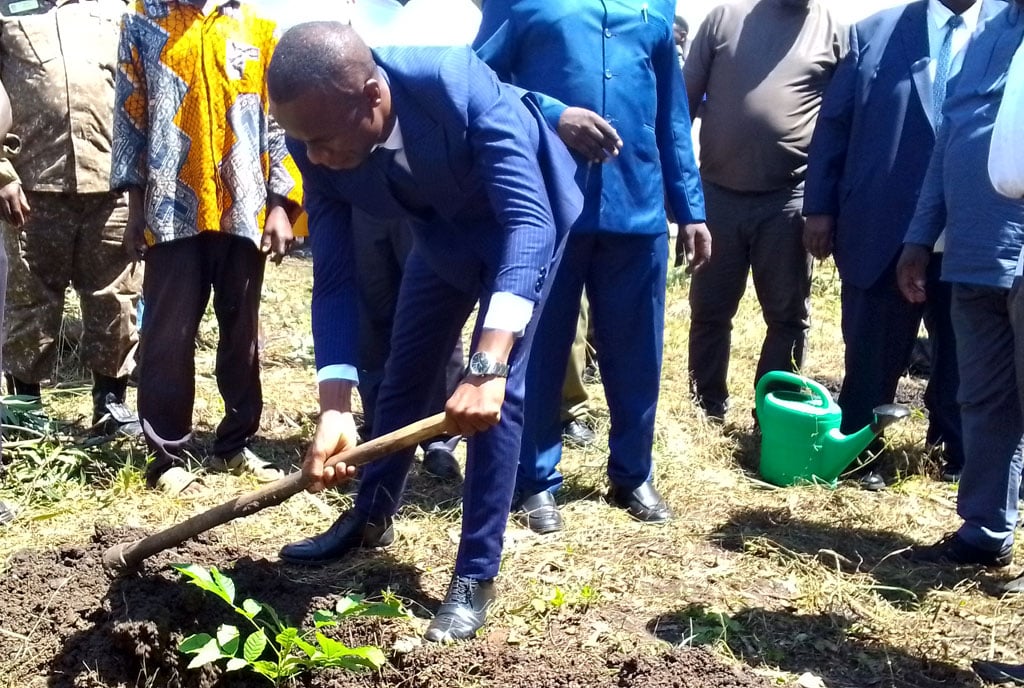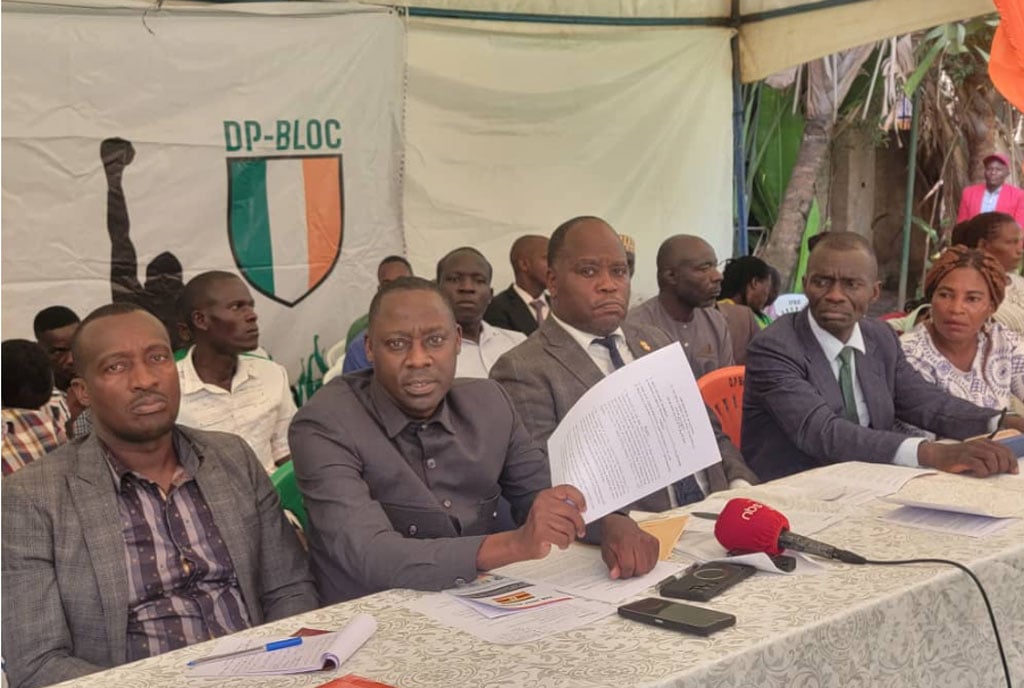Prime
New Mbale zoo to boost tourism, trade

Mr Karim Masaba, the MP for Industrial Division, Mbale City, plants a tree to launch a zoo establishment in his constituency after NFA handed over a land title to UWEC at the weekend. PHOTO/DERRICK WENANI
What you need to know:
- The zoo is expected to create employment opportunities and create a conservation learning education.
By Derick Wenani & Fred Wambede
The establishment of a zoo in Mbale City, situated on a low ridge at the foothill of Wanale ridge in the Bugisu Sub-region, is poised to boost tourism and trade.
The zoo will host various species, including birds, reptiles, plants, and animals such as black and white colobus monkeys. The monkeys are significant as their skins and tails are used by the Bamasaba in traditional circumcision ceremonies.
This development follows the National Forestry Authority’s (NFA) donation of 37 acres of land in Mbale Central Forest Reserve on the Mbale-Tororo road to the Uganda Wildlife Conservation Education Center (UWEC) for the establishment of satellite conservation centres aimed at boosting regional tourism.
Similar centres will also be established in Kyenjojo, Gulu, and Mbarara districts, targeting both local and international tourists.
Mr David Masolo, a resident of Napoli village in Bugema-Nauyo Town Council, expressed local excitement about the influx of tourists.
“As a resident of this area, we are expecting a lot from this zoo, especially in terms of selling our products. Even boda boda riders will earn more,’’ he said.
Mr James Kutosi, the public relations officer of Mbale City, highlighted the zoo’s potential to add value to a city currently undergoing industrialisation with the establishment of various factories, particularly at Mbale Industrial Park.
“We are now sure this city will regain its former glory as the cleanest and most industrialised city as it was in the old days,’’ he said.
Mbale, upgraded to city status in 2021, is often referred to as the “sitting room” of the Bugisu Sub-region, with a population of about 1 million, a significant rise from 25,000 in 1972 when it became a municipality.
Dr James Musinguzi, the executive director of the Uganda Wildlife Conservation Center (commonly known as Entebbe Zoo), explained the educational benefits of the new satellite conservation centre.
“Most students visiting our centre in Entebbe come from upcountry schools, incurring significant expenses. This satellite centre in Mbale will host various species, facilitating conservation education and reducing transport costs for students,’’ he said.
Mr Moses Mukholi, a student at Manafwa High School, said the zoo will provide employment opportunities.
“As students, we are charged a lot for touring zoos in other regions. This will help market Mbale City and also aid students,’’ he remarked.
Mr Akim Watenyeri, a local leader of the Uganda Peoples Congress (UPC), highlighted the zoo’s economic impact, likening it to the economic growth seen in the 1960s and 1970s when factories like Mukwano were operational.
“Mbale was the third largest urban centre after Kampala and Jinja in the 1960s. It is now on the verge of regaining its past glory,’’ he said.
Dr Christopher Ebal, the chairman of the National Forestry Authority’s board of directors, noted the zoo’s potential to create opportunities and the importance of environmental conservation.
“This will remind all Ugandans to take conservation seriously,’’ he said.
Mr Karim Masaba, the MP for Industrial City Division in Mbale City, said the zoo will boost tourism in Bugisu.
“It’s now upon us to increase the tourism budget and invite more investors to venture into tourism,’’ he said.
Mr John Rex Achila, the Resident City Commissioner of Mbale, welcomed the project, highlighting its support for urbanisation and improved household income. He also warned against land encroachers.
“Land grabbers have become a problem. I want to sound a clear warning to all of them. No one should own land in the forest reserve,’’ he said.


